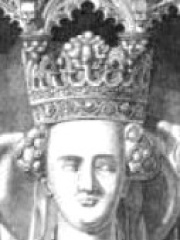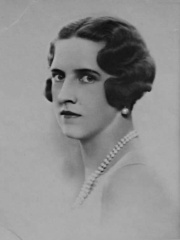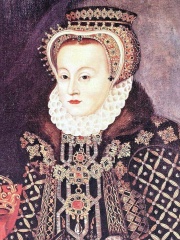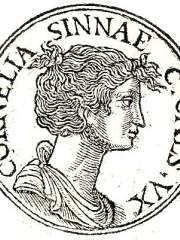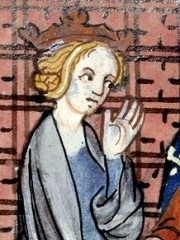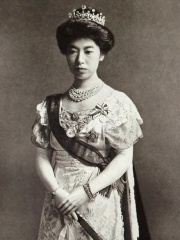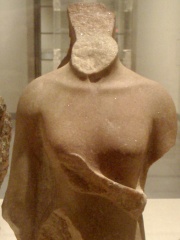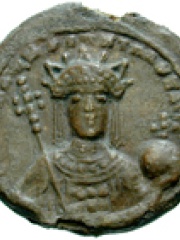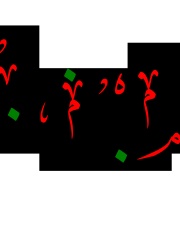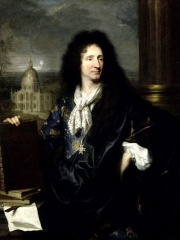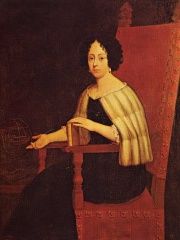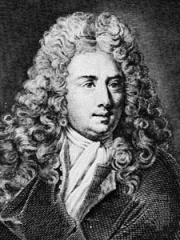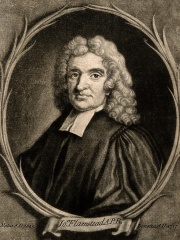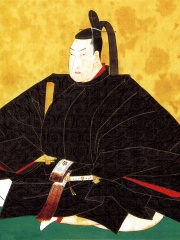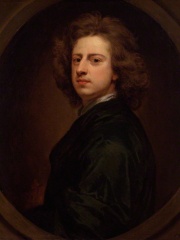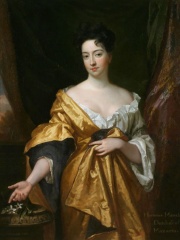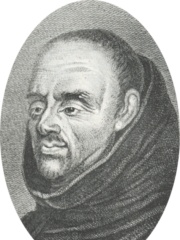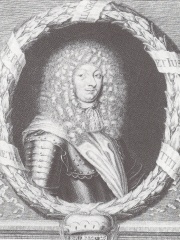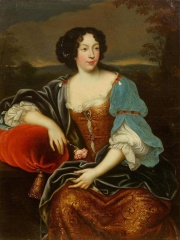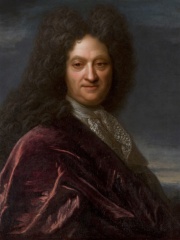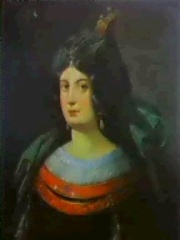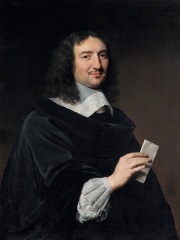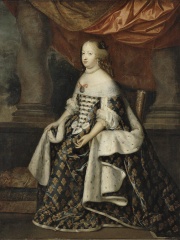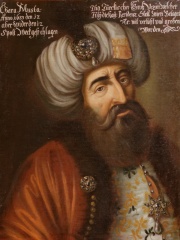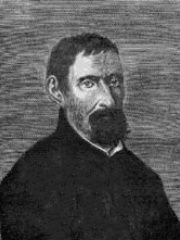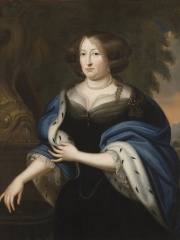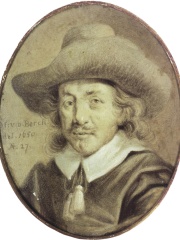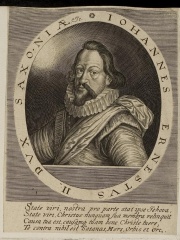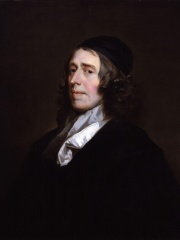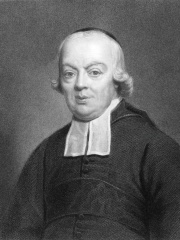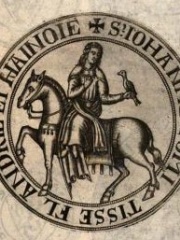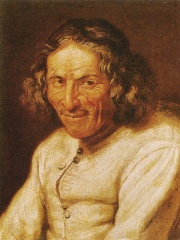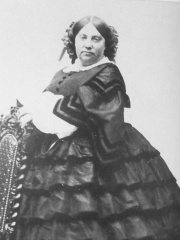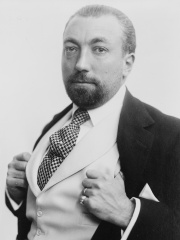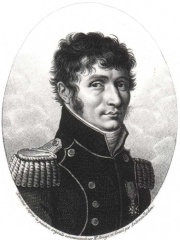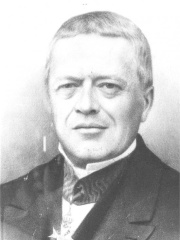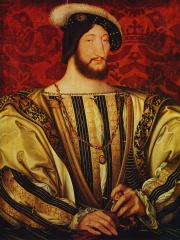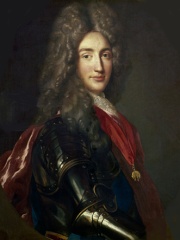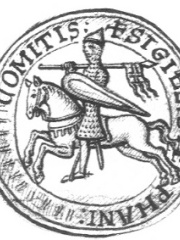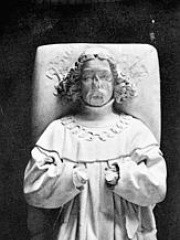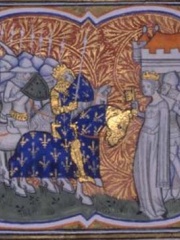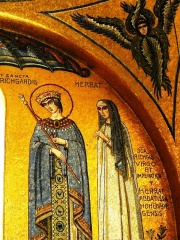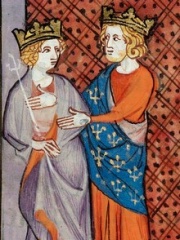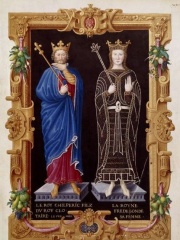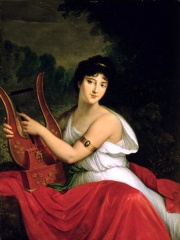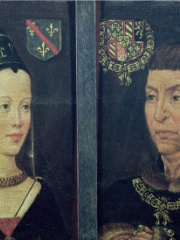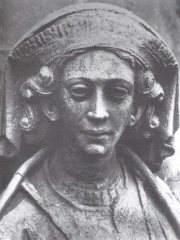COMPANION
Maria Francisca of Savoy
1646 - 1683
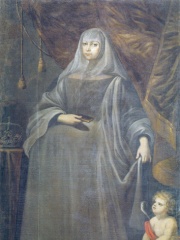
 Maria Francisca of Savoy
Maria Francisca of Savoy
Dona Maria Francisca Isabel of Savoy (French: Marie Françoise Élisabeth; 21 June 1646 – 27 December 1683) was Queen of Portugal during her marriage to King Dom Afonso VI from 2 August 1666 to 24 March 1668 and, as the wife of Afonso's brother King Dom Peter II, from 12 September 1683 until her death in December that year. She married Afonso VI at the age of 20; because the marriage was never consummated, she was able to obtain an annulment. On 28 March 1668, she married the King's brother Infante Dom Peter, Duke of Beja, who was appointed prince regent the same year due to Afonso's perceived incompetence. Read more on Wikipedia
Since 2007, the English Wikipedia page of Maria Francisca of Savoy has received more than 110,154 page views. Her biography is available in 24 different languages on Wikipedia. Maria Francisca of Savoy is the 357th most popular companion (down from 306th in 2019), the 1,463rd most popular biography from France (down from 1,311th in 2019) and the 40th most popular French Companion.
Maria Francisca of Savoy is most famous for being the wife of King John IV of Portugal and for being the mother of Pedro III of Portugal.
Memorability Metrics
110k
Page Views (PV)
59.88
Historical Popularity Index (HPI)
24
Languages Editions (L)
7.34
Effective Languages (L*)
1.95
Coefficient of Variation (CV)
Page views of Maria Francisca of Savoys by language
Over the past year Maria Francisca of Savoy has had the most page views in the English wikipedia edition with 17,034 views, followed by Portuguese (9,861), and Italian (3,711). In terms of yearly growth of page views the top 3 wikpedia editions are Greek (370.71%), Romanian (14.02%), and Asturian (13.43%)
Among COMPANIONS
Among companions, Maria Francisca of Savoy ranks 357 out of 784. Before her are Joan of Navarre, Queen of England, Princess Irene, Duchess of Aosta, Elizabeth of Carinthia, Queen of Germany, Gunilla Bielke, Cornelia, and Miqdad ibn Aswad. After her are Margaret of France, Queen of England and Hungary, Empress Teimei, Pat Nixon, Meketaten, Irene Doukaina, and Muhammad ibn Abi Bakr.
Most Popular Companions in Wikipedia
Go to all RankingsJoan of Navarre, Queen of England
1368 - 1437
HPI: 59.97
Rank: 351
Princess Irene, Duchess of Aosta
1904 - 1974
HPI: 59.96
Rank: 352
Elizabeth of Carinthia, Queen of Germany
1262 - 1312
HPI: 59.95
Rank: 353
Gunilla Bielke
1568 - 1597
HPI: 59.94
Rank: 354
Cornelia
97 BC - 69 BC
HPI: 59.92
Rank: 355
Miqdad ibn Aswad
589 - 653
HPI: 59.90
Rank: 356
Maria Francisca of Savoy
1646 - 1683
HPI: 59.88
Rank: 357
Margaret of France, Queen of England and Hungary
1158 - 1197
HPI: 59.84
Rank: 358
Empress Teimei
1884 - 1951
HPI: 59.82
Rank: 359
Pat Nixon
1912 - 1993
HPI: 59.82
Rank: 360
Meketaten
1348 BC - 1338 BC
HPI: 59.80
Rank: 361
Irene Doukaina
1066 - 1138
HPI: 59.78
Rank: 362
Muhammad ibn Abi Bakr
631 - 658
HPI: 59.78
Rank: 363
Contemporaries
Among people born in 1646, Maria Francisca of Savoy ranks 10. Before her are Jules Hardouin-Mansart, Elena Cornaro Piscopia, Antoine Galland, John Flamsteed, Tokugawa Tsunayoshi, and Godfrey Kneller. After her are Hortense Mancini, Alexandre Exquemelin, Charles Plumier, Frederick I, Duke of Saxe-Gotha-Altenburg, Élisabeth Marguerite d'Orléans, and Pierre Le Pesant, sieur de Boisguilbert. Among people deceased in 1683, Maria Francisca of Savoy ranks 7. Before her are Turhan Hatice Sultan, Jean-Baptiste Colbert, Maria Theresa of Spain, Kara Mustafa Pasha, Afonso VI of Portugal, and Guarino Guarini. After her are Margravine Hedwig Sophie of Brandenburg, Nicolaes Pieterszoon Berchem, Jacob Stainer, John Ernest II, Duke of Saxe-Weimar, Juraj Križanić, and John Owen.
Others Born in 1646
Go to all RankingsJules Hardouin-Mansart
ARCHITECT
1646 - 1708
HPI: 65.03
Rank: 4
Elena Cornaro Piscopia
PHILOSOPHER
1646 - 1684
HPI: 63.68
Rank: 5
Antoine Galland
WRITER
1646 - 1715
HPI: 63.58
Rank: 6
John Flamsteed
ASTRONOMER
1646 - 1719
HPI: 62.95
Rank: 7
Tokugawa Tsunayoshi
POLITICIAN
1646 - 1709
HPI: 61.75
Rank: 8
Godfrey Kneller
PAINTER
1646 - 1723
HPI: 60.00
Rank: 9
Maria Francisca of Savoy
COMPANION
1646 - 1683
HPI: 59.88
Rank: 10
Hortense Mancini
POLITICIAN
1646 - 1699
HPI: 57.05
Rank: 11
Alexandre Exquemelin
WRITER
1646 - 1707
HPI: 55.50
Rank: 12
Charles Plumier
BIOLOGIST
1646 - 1704
HPI: 55.16
Rank: 13
Frederick I, Duke of Saxe-Gotha-Altenburg
POLITICIAN
1646 - 1691
HPI: 53.23
Rank: 14
Élisabeth Marguerite d'Orléans
POLITICIAN
1646 - 1696
HPI: 51.78
Rank: 15
Pierre Le Pesant, sieur de Boisguilbert
ECONOMIST
1646 - 1714
HPI: 51.32
Rank: 16
Others Deceased in 1683
Go to all RankingsTurhan Hatice Sultan
POLITICIAN
1627 - 1683
HPI: 75.72
Rank: 1
Jean-Baptiste Colbert
POLITICIAN
1619 - 1683
HPI: 72.85
Rank: 2
Maria Theresa of Spain
COMPANION
1638 - 1683
HPI: 72.35
Rank: 3
Kara Mustafa Pasha
POLITICIAN
1634 - 1683
HPI: 70.04
Rank: 4
Afonso VI of Portugal
POLITICIAN
1643 - 1683
HPI: 65.79
Rank: 5
Guarino Guarini
ARCHITECT
1624 - 1683
HPI: 65.51
Rank: 6
Maria Francisca of Savoy
COMPANION
1646 - 1683
HPI: 59.88
Rank: 7
Margravine Hedwig Sophie of Brandenburg
POLITICIAN
1623 - 1683
HPI: 58.20
Rank: 8
Nicolaes Pieterszoon Berchem
PAINTER
1622 - 1683
HPI: 56.70
Rank: 9
Jacob Stainer
POLITICIAN
1619 - 1683
HPI: 56.15
Rank: 10
John Ernest II, Duke of Saxe-Weimar
POLITICIAN
1627 - 1683
HPI: 54.54
Rank: 11
Juraj Križanić
RELIGIOUS FIGURE
1618 - 1683
HPI: 53.91
Rank: 12
John Owen
POLITICIAN
1616 - 1683
HPI: 52.21
Rank: 13
In France
Among people born in France, Maria Francisca of Savoy ranks 1,463 out of 6,770. Before her are Charles-Michel de l'Épée (1712), Joan, Countess of Flanders (1200), Paul Scarron (1610), Theobald II, Count of Champagne (1093), Louise Marie Thérèse of Artois (1819), and Paul Poiret (1879). After her are Étienne-Louis Malus (1775), Antoine Augustin Cournot (1801), Jean Clouet (1480), James FitzJames, 1st Duke of Berwick (1670), Margaret of France, Queen of England and Hungary (1158), and Stephen, Count of Blois (1045).
Others born in France
Go to all RankingsCharles-Michel de l'Épée
POLITICIAN
1712 - 1789
HPI: 59.90
Rank: 1,457
Joan, Countess of Flanders
POLITICIAN
1200 - 1244
HPI: 59.90
Rank: 1,458
Paul Scarron
WRITER
1610 - 1660
HPI: 59.89
Rank: 1,459
Theobald II, Count of Champagne
POLITICIAN
1093 - 1152
HPI: 59.89
Rank: 1,460
Louise Marie Thérèse of Artois
POLITICIAN
1819 - 1864
HPI: 59.89
Rank: 1,461
Paul Poiret
FASHION DESIGNER
1879 - 1944
HPI: 59.88
Rank: 1,462
Maria Francisca of Savoy
COMPANION
1646 - 1683
HPI: 59.88
Rank: 1,463
Étienne-Louis Malus
MATHEMATICIAN
1775 - 1812
HPI: 59.88
Rank: 1,464
Antoine Augustin Cournot
MATHEMATICIAN
1801 - 1877
HPI: 59.86
Rank: 1,465
Jean Clouet
PAINTER
1480 - 1541
HPI: 59.86
Rank: 1,466
James FitzJames, 1st Duke of Berwick
POLITICIAN
1670 - 1734
HPI: 59.85
Rank: 1,467
Margaret of France, Queen of England and Hungary
COMPANION
1158 - 1197
HPI: 59.84
Rank: 1,468
Stephen, Count of Blois
NOBLEMAN
1045 - 1102
HPI: 59.84
Rank: 1,469
Among COMPANIONS In France
Among companions born in France, Maria Francisca of Savoy ranks 40. Before her are Vanessa Paradis (1972), Queen Anne of Romania (1923), Charles I, Duke of Bourbon (1401), Constance of Arles (974), Richardis (840), and Bertrade de Montfort (1070). After her are Margaret of France, Queen of England and Hungary (1158), Fredegund (545), Eléonore Denuelle de La Plaigne (1787), Isabella of Bourbon (1437), Philippa of Hainault (1314), and Margaret of France, Queen of England (1282).
Vanessa Paradis
1972 - Present
HPI: 61.22
Rank: 34
Queen Anne of Romania
1923 - 2016
HPI: 60.90
Rank: 35
Charles I, Duke of Bourbon
1401 - 1456
HPI: 60.86
Rank: 36
Constance of Arles
974 - 1032
HPI: 60.59
Rank: 37
Richardis
840 - 895
HPI: 60.44
Rank: 38
Bertrade de Montfort
1070 - 1117
HPI: 60.31
Rank: 39
Maria Francisca of Savoy
1646 - 1683
HPI: 59.88
Rank: 40
Margaret of France, Queen of England and Hungary
1158 - 1197
HPI: 59.84
Rank: 41
Fredegund
545 - 597
HPI: 59.63
Rank: 42
Eléonore Denuelle de La Plaigne
1787 - 1868
HPI: 59.45
Rank: 43
Isabella of Bourbon
1437 - 1465
HPI: 59.37
Rank: 44
Philippa of Hainault
1314 - 1369
HPI: 59.21
Rank: 45
Margaret of France, Queen of England
1282 - 1318
HPI: 58.87
Rank: 46
